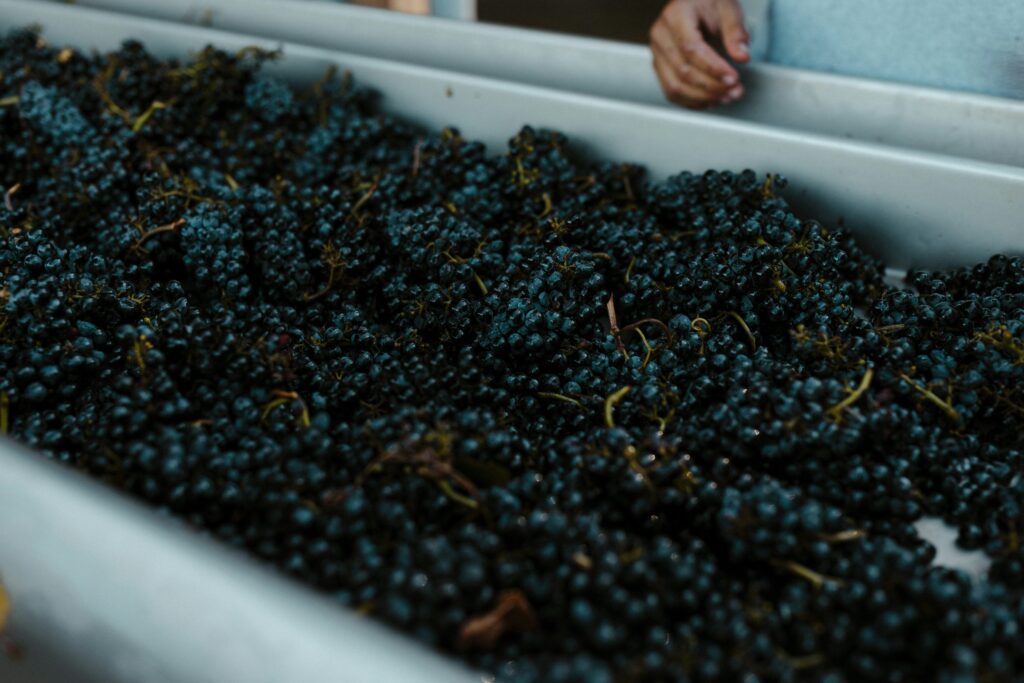If you’ve found yourself here, you’re probably wondering, “Should Pinot Noir be chilled?”
The simple answer is yes, Pinot Noir should be served lightly chilled. Let’s dive in to explore Pinot Noir, why it’s best served chilled, and how to ensure the perfect temperature every time.
Introduction to Pinot Noir

Pinot Noir, often called the “heartbreak grape” due to its finicky nature, is like the “diva” of the grape world. It thrives only in cooler climates with specific soil conditions and is susceptible to diseases in the vineyards. It needs the perfect conditions to be content, just like any diva does.
Pinot Noir in the Glass: Flavors and Beyond
Pinot Noir is known for its delicate fruity characteristics, which vary depending on where the grapes are grown, but there are some similarities across the board for this beloved grape.
- Fruit: Pinot Noir often exhibits notes of ripe red berries such as cherries, raspberries, and strawberries, with occasional hints of plum or cranberry.
- Oak: While Pinot Noir generally spends less time in oak compared to other red wines, it can still develop subtle oak-derived flavors like vanilla, clove, or cedar, contributing to its complexity and structure.
- Maturation: As Pinot Noir ages, it often develops intriguing earthy and mushroom-like aromas and flavors, adding layers of complexity to its flavor profile. These tertiary characteristics can emerge over time, particularly in well-aged bottles.
In addition to the flavors of Pinot Noir, it’s important to understand other characteristics, especially as they relate to whether Pinot Noir should be chilled.
- Acid: Pinot Noir typically has a moderate to high level of acidity, providing a refreshing and lively sensation on the palate.
- Tannin: Unlike many other red wines, Pinot Noir tends to have lower levels of tannins, resulting in a smoother and more approachable mouthfeel, with silkier texture and less astringency.
- Body: Pinot Noir is generally considered a lighter-bodied red wine, with a silky and elegant texture that dances lightly on the palate.
The Science Behind Chilling Wine
The truth is that serving temperatures all come down to personal preference, but let’s cover the science behind chilling wines.
Temperature plays a crucial role in wine perception, including taste, aroma, and overall enjoyment:
- Chemical Reactions: Temperature affects the rate of oxidation and the release of volatile aromatic compounds. Chilling can slow down these reactions, preserving the wine’s freshness and aroma.
- Acidity and Tannin Perception: Lower temperatures can enhance the perception of acidity and tannins in wine, balancing these characteristics and making the wine more approachable.
- Aroma and Flavor Preservation: Chilling wine can help preserve its delicate aromas and flavors by slowing down the rate of evaporation, particularly important for aromatic white wines and delicate red wines like Pinot Noir.

So, Should Pinot Noir Be Chilled? Yes!
We often hear that red wines should be served at room temperature. This recommendation originated in days when heating systems weren’t around.
Today, it is likely that serving your wine at room temperature is going to be a bit too warm, especially in the colder months when the thermostat is set in the mid-70s.
The ideal serving temperature for Pinot Noir is 54 to 60°F—cool enough to enhance the fruit aromas and refreshing acidity, but not too cool that the flavors are muted.
How to Chill Pinot Noir to the Perfect Temperature
The easiest and most accurate way to chill your Pinot Noir to 54 to 60°F is with a temperature-controlled wine fridge.
Fear not if you don’t have one. Popping your Pinot Noir in the fridge for 30 minutes before you are ready to drink will do the trick!
Remember that serving temperatures are a personal preference, so play around with different temperatures to find what suits your palate best.
Pinot Noir Around the World

Now that we’ve answered the question, “Should Pinot Noir be chilled”, you’re ready to explore the world of Pinot Noir.
Here are the most common regions around the world for Pinot Noir.
Burgundy, France – Often considered the birthplace of Pinot Noir, Burgundy is home to some of the most prestigious Pinot Noir vineyards in the world.
Willamette Valley, Oregon, USA – This region has gained international acclaim for its high-quality Pinot Noir, thanks to its cooler climate and diverse soils.
Sonoma Coast and Russian River Valley, California, USA – Known for their cool maritime influence, these regions produce Pinot Noir grapes with intense flavors and complexity.
Marlborough, New Zealand – While renowned for Sauvignon Blanc, Marlborough also produces exceptional Pinot Noir due to its cooler climate and clay-rich soils.
Central Otago, New Zealand – The world’s southernmost wine region, Central Otago, produces Pinot Noir with intense flavors and excellent structure.
Tasmania, Australia – Tasmania’s cool climate and maritime influence make it an ideal region for producing high-quality Pinot Noir.
Budget-Friendly Pinot Noirs



Brancott Estate Pinot Noir, Marlborough, New Zealand | $16
Loius Jadot, Pinot Noir, Burgundy, France | $20
Rodney Strong Pinot Noir, Russian River Valley, California | $25
Conclusion
The question “Should Pinot Noir be chilled” is easily settled with a resounding yes. Its delicate fruity flavors, balanced acidity, and lighter body make it an ideal candidate for serving lightly chilled.
With the ideal serving temperature identified and methods for achieving it discussed, exploring the diverse world of Pinot Noir becomes even more enticing. Whether savored from the prestigious vineyards of Burgundy or the cool climates of Oregon, Pinot Noir promises a journey of exploration and enjoyment!
This post answers the question: should Pinot Noir be chilled?

1 Comment